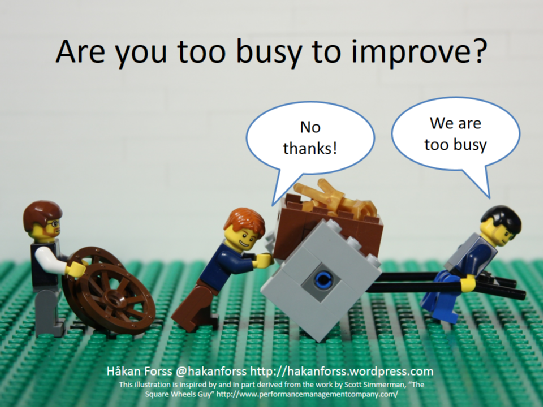When I’m reading for content, I’m all about the marginalia: underlines, questions in the borders, even one sided handwritten debates with the author. Which is why I was much relieved that the Kindle allows you to digitally underline text and add notes too — you can even export them to a PDF to save and search, a way cool feature that I’ve taken advantage of many a time.
But what if the text in a book went from edge to edge? No spaces between the lines, no space on either side of the page, none at the top, none at the bottom: a page littered with letters. Hard to read, cramped with lines blurring, and eyes crossing…
Now imagine if that book is our firm’s story: tasks and activities wedged endtoend, no space inbetween, no real breaks, no room in the borders. When all the space is filled, there’s no place to make edit markings. When all our resources are committed, there’s no capacity for change. When the entire page is full, there’s no space to doodle in the margins.
Margin: it’s a necessary ingredient to evolution, change, and development in all of our firms. So anytime you set out to start something new, you need to create margin to let it happen in. But how is margin created?:
• Automate — I remember a few years back my firm switched to using Bill.comto invoice and collect customer payments via automatic ACH. The time saved not having to print invoices, mail, followup on late payments, prepare bank deposits, drive to the bank, etc. was now time I could use to focus on the firm. Looking around, are there areas of your firm you could automate to create margin?
• Delegate — A rite of passage most small business owners have to overcome is knowing when to trust a process to someone else. Yes, no one will do it the same way you will, but generally as long as it’s at least 80%, you’re good to go. A couple years ago, I transitioned the new payroll customer setup process to a team member. Part of that meant I had to take time to document my process, but after that, I could walk the team member through the process, and entrust it to their capable hands. Looking around, are there areas of your firm you can delegate to create margin?
• Eliminate — Sometimes it makes sense to just stop doing something. When I first started working with my dad’s firm, we delivered monthly compilations for our small business customers. After a bit, I began asking the owners if they found the financials helpful — they said no. So I eliminated them, and began the search for what would be truly helpful instead (more on that another time). Looking around, are there areas you can just eliminate to create margin?
• Wedge — A different strategy to create margin is just to wedge it into the schedule: don’t wait for available time, just block that one hour a week, take that firm retreat, or attend that needed conference. For me, it’s one hour first thing Friday mornings for my creative time. You can be amazed (as was I) that the other stuff somehow gets done. Looking around, what well placed wedge will help you create margin?
• Expand — Adding capacity is another way to create margin. When we sensed demand was outstripping capacity, we let our network know we were looking for new hires and welcomed a new team member on board. Are you operating smoothly but know that expanding will allow you to regain needed margin?
Whatever your scenario, see margin as a strategic tool in your evolution shed, and actively establish and maintain it. Because the doodles in today’s margins, become the text of tomorrow’s story.

(As originally posted on the Thriveal blog.)
